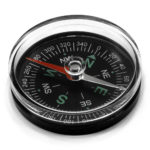 “Science aims for measurable results through testing and analysis of natural phenomena.”
“Science aims for measurable results through testing and analysis of natural phenomena.”
The scientific method – from livescience.com
“When conducting research, scientists use the scientific method to collect measurable, empirical evidence in an experiment related to a hypothesis (often in the form of an if/then statement), the results aiming to support or contradict a theory. The steps of the scientific method go something like this:
- Make an observation or observations.
- Ask questions about the observations and gather information.
- Form a hypothesis — a tentative description of what’s been observed, make predictions using that hypothesis.
- Test the hypothesis and predictions in an experiment that can be reproduced.
- Analyze the data and draw conclusions; accept or reject the hypothesis or modify the hypothesis if necessary.
- Reproduce the experiment until there are no discrepancies between observations and theory.”
“Replication of methods and results is my favorite step in the scientific method. The reproducibility of published experiments is the foundation of science. No reproducibility – no science.” – Moshe Pritsker, as told to Livescience, circa 2015
Image: by Evan-Amos, released into the Public Domain, 2010.